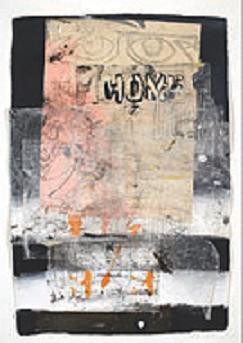Dark Victory
19 Apr - 30 Jun 2007

© Michael Bevilacqua
Fables of theReconstruction #39, 2006 collage on paper, 113x80cm, Courtesy: the Artist and Galleri Faurschou, Copenhagen
Fables of theReconstruction #39, 2006 collage on paper, 113x80cm, Courtesy: the Artist and Galleri Faurschou, Copenhagen
DARK VICTORY
curated by Dimitrios Antonitsis
MICHAEL BEVILACQUA, MARCO BRAMBILLA, SCOTT CAMPBELL, WES LANG, HANNA LIDEN, NATE LOWMAN, THREEASFOUR , AARON YOUNG
Dark Victory is based on the sentimental, tragic and moving melodrama of the same title, (a "weepie) from Warner Bros. studios - made in Hollywood's most famous and competitive year (1939). The film contains an electrifying, compelling, tour de force, tear-jerking performance from its major star Bette Davis. It was a bit of a risk for the movie studio to make and publicize an intense film about a terminally-ill patient with "prognosis negative."
The protagonist is a young socialite-heiress named Judith Traherne (Davis), who suffers from a brain tumour and ultimately falls in love with her supportive and dedicated doctor Frederick Steele (Brent). In the midst of her deadly illness, she courageously meets her fate when her eyesight dims. She climbs her stairs for the last time - accompanied by Max Steiner's swelling score in the film's finale.
Like Judith, the participating artists are ambitious, unafraid and often subversive. (Sometimes they even suffer from the occasional slight spell of dizziness or hang-over). They defy aesthetic categories by altering the logic of production. The production of art that stratifies, if not neutralizes, socio-political reality. Often their assemblies of images create a bridge from the current institutional proliferation of obscured meaning to a compelling loop of communal thinking. (And all this in a very cinematic way). Rebellion against prevailing norms takes the form of a contingency of materials, used in ways that might be described as a refusal of sculptural monumentality. (Furthermore, the objects resemble prototypes of stage props for Hollywood film sets). The artworks in Dark Victory are saturated with the ambiguity of the fading eyesight, where dizziness, headaches, and occasional attacks of double vision may create a mental state, where not everything is understood, but everything is questioned.
Dimitrios Antonitsis
The participated artists will be present during the exhibition’s opening.
The exhibition is accompanied by a catalogue.
curated by Dimitrios Antonitsis
MICHAEL BEVILACQUA, MARCO BRAMBILLA, SCOTT CAMPBELL, WES LANG, HANNA LIDEN, NATE LOWMAN, THREEASFOUR , AARON YOUNG
Dark Victory is based on the sentimental, tragic and moving melodrama of the same title, (a "weepie) from Warner Bros. studios - made in Hollywood's most famous and competitive year (1939). The film contains an electrifying, compelling, tour de force, tear-jerking performance from its major star Bette Davis. It was a bit of a risk for the movie studio to make and publicize an intense film about a terminally-ill patient with "prognosis negative."
The protagonist is a young socialite-heiress named Judith Traherne (Davis), who suffers from a brain tumour and ultimately falls in love with her supportive and dedicated doctor Frederick Steele (Brent). In the midst of her deadly illness, she courageously meets her fate when her eyesight dims. She climbs her stairs for the last time - accompanied by Max Steiner's swelling score in the film's finale.
Like Judith, the participating artists are ambitious, unafraid and often subversive. (Sometimes they even suffer from the occasional slight spell of dizziness or hang-over). They defy aesthetic categories by altering the logic of production. The production of art that stratifies, if not neutralizes, socio-political reality. Often their assemblies of images create a bridge from the current institutional proliferation of obscured meaning to a compelling loop of communal thinking. (And all this in a very cinematic way). Rebellion against prevailing norms takes the form of a contingency of materials, used in ways that might be described as a refusal of sculptural monumentality. (Furthermore, the objects resemble prototypes of stage props for Hollywood film sets). The artworks in Dark Victory are saturated with the ambiguity of the fading eyesight, where dizziness, headaches, and occasional attacks of double vision may create a mental state, where not everything is understood, but everything is questioned.
Dimitrios Antonitsis
The participated artists will be present during the exhibition’s opening.
The exhibition is accompanied by a catalogue.
